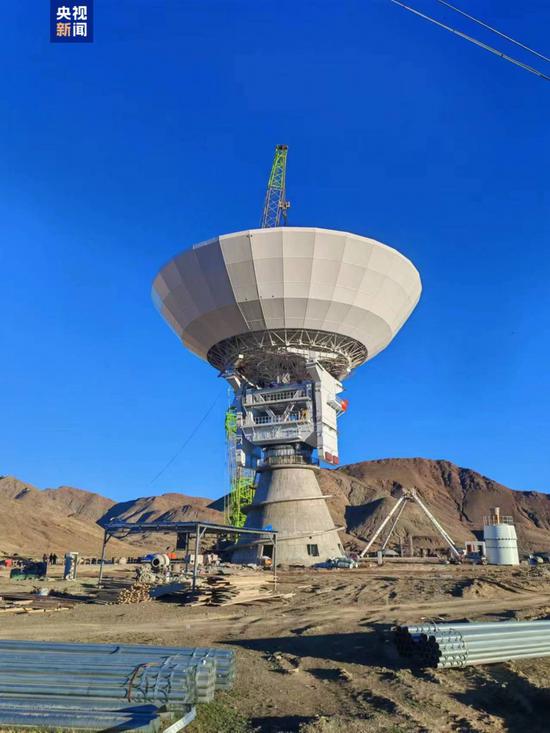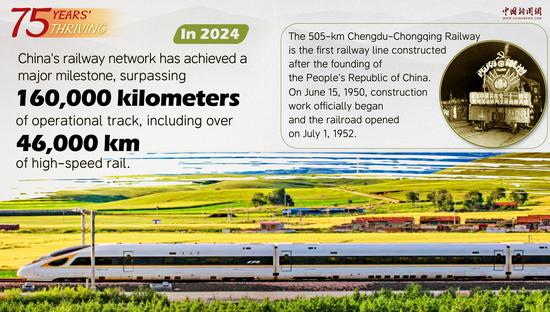
The installation of the main reflector for the antenna system of the 40-meter-aperture radio telescope completes in Shigatse, Xizang autonomous region, Oct 7, 2024. (Photo/CCTV)
The main reflector for the antenna system of the 40-meter-aperture radio telescope was hoisted and installed on Monday in Shigatse, Southwest China's Xizang autonomous region, CCTV News reported.
Jointly developed by Shanghai Astronomical Observatory (SHAO) under the Chinese Academy of Sciences and the 39th Research Institute of China Electronics Technology Group Corporation, the radio telescope is a project constructed to offer technical support for the country's lunar and deep-space probe missions in the future.
The completion of the main reflector installation marks the preliminary completion of the antenna, paving the way for subsequent testing and adjustment of the telescope.
To adapt to the high-altitude environment, the radio telescope incorporates advanced technologies, with the antenna offering full mobility, high precision and multi-purpose functionality.
The construction of the telescope is expected to be completed by the end of 2024, with very-long-baseline interferometry (VLBI) observation capabilities in early 2025. VLBI is a technique that measures the time difference in signal arrival at multiple Earth-based antennas, effectively creating a virtual telescope with a size equivalent to the maximum distance between the telescopes. China's VLBI network currently consists of four observatories located in Beijing, Shanghai, Urumqi and Kunming, with a data processing center managed by SHAO.
Along with another 40-meter radio telescope installed in August in Changbai Mountain, Jilin province, the radio telescope in Shigatse will join the VLBI network in China. They will form a flexible six-station, one-center twin network capable of simultaneously tracking the orbits of lunar and deep-space probes in two different regions in the sky.

















































 京公网安备 11010202009201号
京公网安备 11010202009201号